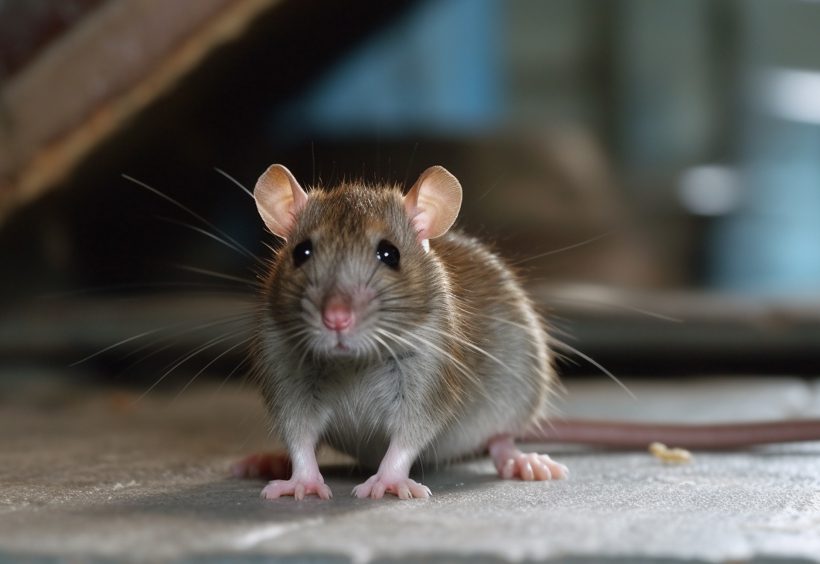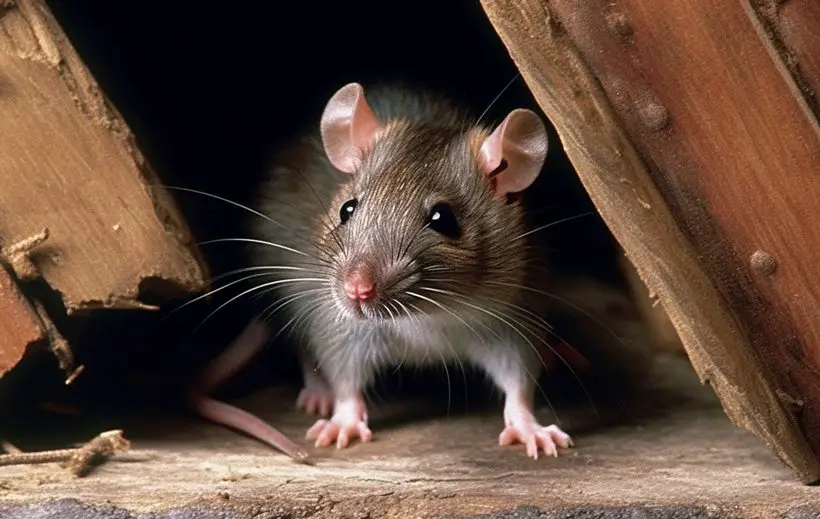How to Spot & Clean Rat Droppings: Expert Advice!
Rats can enter the house with many sufferings and diseases. If there are rats in your house, the droppings problem can be the biggest one. They will excrete here and there in your house.
So, How to Spot & Clean Rat Droppings: What is Expert Advice? Spot the area where they are excreting. Ensure proper ventilation and wear a mask before starting cleaning. Spray the Chlorine bleach solution and let the droppings wet. Pick up the droppings with a piece of paper and throw it out in a plastic bag.
This is not the end of this process. A lot more work is left, which you should follow to get free from pathogens. Stay with this article to know all the steps properly.
How to Spot & Clean Rat Droppings: Expert Advice
Rat bite fever is a common disease in pets caused by rat droppings. Spotting the droppings and properly cleaning them can decrease the disease rate. The rats excrete large amounts and the droppings remain here and there. Before cleaning, spot all the droppings and then follow the following steps.

Step 1: Identify Rat Droppings
Rat droppings are not so small in size but a bit bigger than rice grains. Size can remain between ½ inch to ¾ inch. It can be dark brown or black. Dry droppings turn gray, while fresh are black. It will turn white if it remains in the spot for several days.
With droppings, there is a high chance of remaining marks of urination. If you are having rats in your house, you can find droppings regularly. They can excrete about 40 droppings each night. So, finding droppings with all these criteria every day can confirm that it is rat droppings.
Step 2: Ensure Proper Ventilation
Before cleaning, there must be proper air between you and the droppings. Proper air passage can diffuse most viruses and decrease the risk of infection. It will be best for your health if you ensure proper air passage half an hour before cleaning.

Step 3: Personal Protection
Taking personal protection before cleaning the droppings is important. Hantavirus, an enzootic virus that remains in rat droppings, can cause Hantavirus Pulmonary syndrome in humans.
Cleaning the droppings with bare hands and face is not safe. So if possible, wear a mask and one-time usable gloves before cleaning.
Step 4: Avoid using Vacuum Cleaner Or Broom
Using a broom or vacuum cleaner can invite infections. While vacuuming or brooming the droppings, the virus or pathogens can get free. They can get stuck in the broom or vacuum cleaner. Thus, using them for further cleaning, the pathogens can transfer into other spots.
Also, removing it with a vacuum cleaner or broom is not a proper way to clean droppings. The pathogens will remain in the drooping spot. If you are having a crawling baby in the house, he or she may get easily affected by it.
If children’s toys come in contact with the pathogens, the baby can swallow them. Ultimately, it will cause severe disease to your little children.
Step 5: Make A Protection Solution
Disinfecting the droppings is a good way of cleaning. The droppings will not further spread infection. To make a disinfecting solution
- Take 360 ml or approximately one and a half cups of chlorine bleach in a bottle.
- Mix 5.678 L or one gallon of water into it.
- Now, shake it well for proper mixing.
You must wear a mask while doing this process and the next step. Ensure proper air passage because inhalation of chlorine gas can cause some immediate health problems.
So, never skip proper protection while doing this phase. Inhalation of chemical gasses can cause respiratory irritation. It will further turn into a more severe disease.
Step 6: Spray The Solution In Droppings
Do not spray the disinfecting solution into the droppings. Ensure the proper amount that the droppings can get wet. Leave it for a few minutes.

Step 7: Use A Paper To Remove Droppings
Now, use a piece of paper to pick up the droppings. Secure the droppings in a plastic bag and tie it. Try to immediately throw it out. Or if not possible, place it in a covered trash.
You can follow these steps to remove the droppings. Go through the next part to clean the spot properly.
How To Clean The Spot And Its Surroundings?
The pathogen will remain, grow, and multiply on the spot if you let it unclean. So, clean the spot and its surroundings following the options below.

Wipe The Spot
To sensitize the spot, you should wipe the spot. Spray 10% chlorine bleach and wipe with a paper. If the surface is sensitive, spray 3% hydrogen peroxide on the spot. Then, use a mop and raw water to clean the place.
If you do not have any of these elements, mix Dettol in raw water and wipe it out. If the droppings are found on furniture, wipe it with shampoo or follow a steam cleaning process.
Use Vinegar Solution
After desensitizing, it is time to disinfect the place. Vinegar or natural disinfectant that can kill pathogens and act against bacteria. You can also use commercial disinfectants. Vinegar is a common and available one.
Spray white vinegar or any other Commercial one on the place. Wipe it with a paper towel. Do not leave the place like this because this chemical can contaminate food or toys. Wipe the place again with a disinfected or clean mop with mild hot water.
Clean The Contaminated Cloth
Now it is time to clean the clothes and hand gloves. If you are using gloves for one time, secure them in a plastic bag. Tie it and throw it out. If it is a reusable or latex glove, wash it with regular cleaning detergent and hot water.
Never let the clothes, shoes, and gloves remain unclean, which are involved while removing droppings. Do it immediately after removing droppings and cleaning the spot.
Wash Out Hand And Possible Exposed Areas
Now clean your hand and exposed parts while doing the whole procedure. Use disinfectant soap or hand wash. Carefully clean the undersurface of the nail. You can use sanitizer after washing. Bathing after the whole procedure can be more effective.
This is how you should end the procedure. Skipping any of the steps means there is a high chance of remaining pathogens.
FAQs
These are some commonly asked questions by people about cleaning rat droppings.
Q1. Do rat droppings smell?
Yes, rat droppings smell. But it does not smell as strong as their urine. As they urinate and excrete simultaneously, the combined smell is noticeable. Mainly due to urinating at the same time, their droppings also smell bad.
Q2. Should a pregnant woman clean the rat droppings?
A pregnant woman should not clean rat droppings. Though the cleaning process is secured, it does not ensure a hundred percent safety. The mother can be affected by the pathogen. And if the mother gets affected, the child can be affected as well.
Q3. What are the diseases caused by rat droppings?
Hantavirus pulmonary syndrome is a common disease caused by rat droppings. Other diseases like lymphocytic meningitis, salmonellosis, bubonic plague, rat bite fever, and leptospirosis can be caused by droppings.
Conclusion
Rats come with dropping problems. To remove the droppings, many people just use a broom to sweep them out. But it is not a good way. Rather, it can infect the broom and that can carry out the pathogen in another place.
Each step of cleaning expertly should be followed. Not cleaning the droppings for a long time can infect members of your house. Finally, take steps to catch the rats or call pest control to eliminate rats from your home. Properly seal the entry points to avoid further rat entrance.




